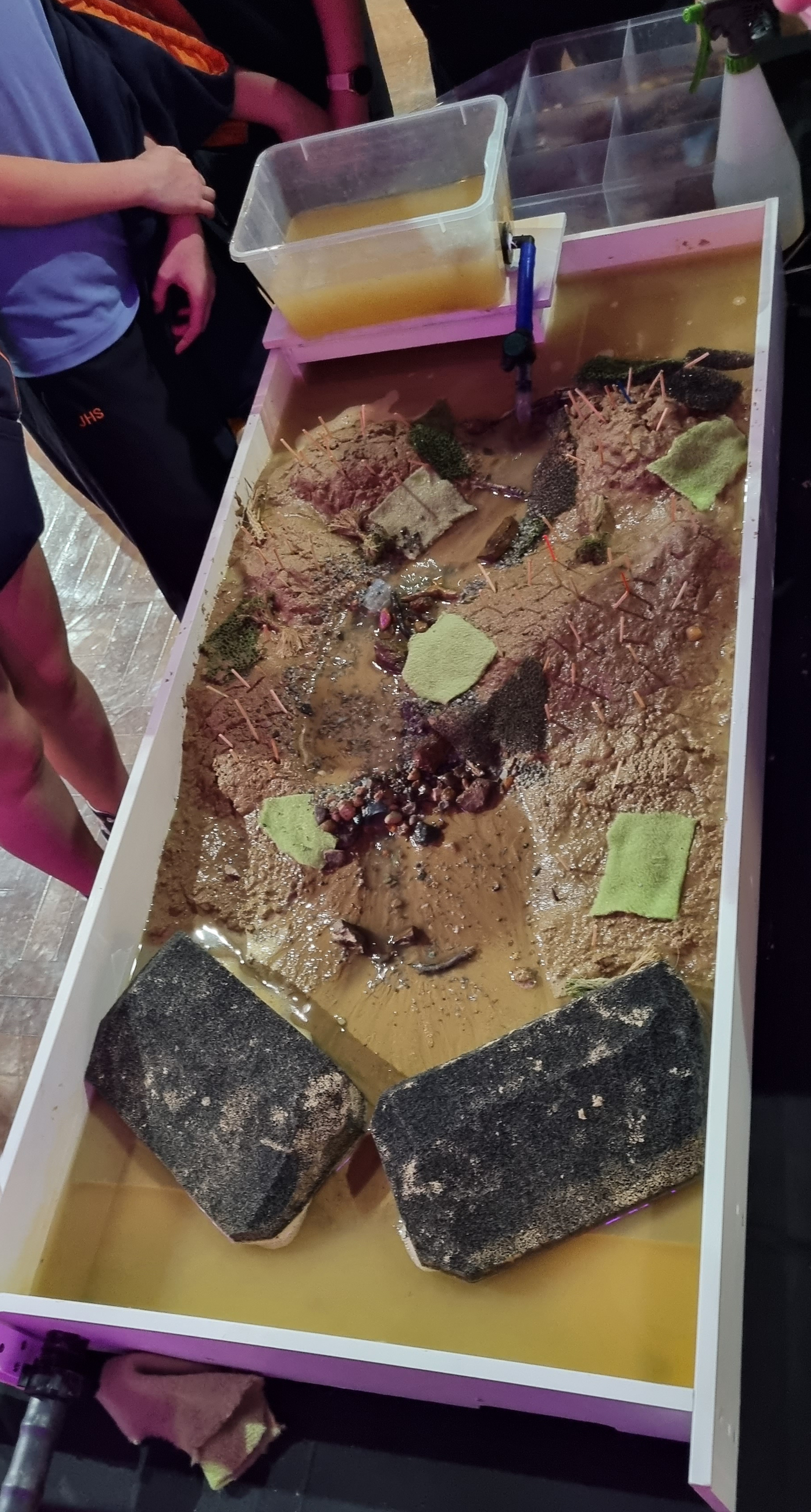CSIRO STEMfest review
Mulloon Institute's Penny Cooper and Chris Inskeep spent the day with local secondary students sharing the scientific monitoring and engineering practices of the Mulloon Rehydration Initiative through a range of fun hands-on activities at STEMfest. Geared towards sparking secondary students' curiosity in pursuing STEM careers in the region, this event was a collaboration between NSW Regional Development, the CSIRO Generation STEM program, local industries and schools. Other exhibitors explored environmental science, robotics, engineering, spatial and drone technology. Opening the event was a Welcome to Country included a smoking ceremony and traditional dancing.
Students were invited to ‘dabble in the creek’ with our stream table model using silt and buckets of water! Sculpting landscapes using tiny tools and scaled materials, they observed how water moves in landscapes, the erosive force of water and experimented with ways to restore eroded and degraded creeks. Instream structures based on Mulloon Institute's design principles were made to simulate how to slow and spread the flow of water to rehydrate the landscape.
Above left is a model of a degraded landscape with bare hills, poor groundcover and an incised creek. The second picture is after the student group did some restoration work and planted trees on the hills (toothpicks), restored groundcover (felt etc) and installed leaky weirs in the creek system. Students could visualise how the stream flow has now spread and slowed.
They enjoyed looking through before and after photos of the Mulloon Institute’s rehydration work which gave some perspective on the real life, on-ground outcomes of interventions and landscape rehydration practices.
Another big hit was the Mulloon Catchment Interactive Map, a visualisation of our scientific monitoring data that highlighted the extent of the science monitoring across the catchment. Students were able to see the results by zooming in on locations of flora and fauna monitoring transects, weather stations, piezometers, and instream structures.
We were delighted to share with the next generation of land stewards the vital role we all play in repairing our creeks and catchments that are informed by science and engineering principles.
Penny and students creating the model



